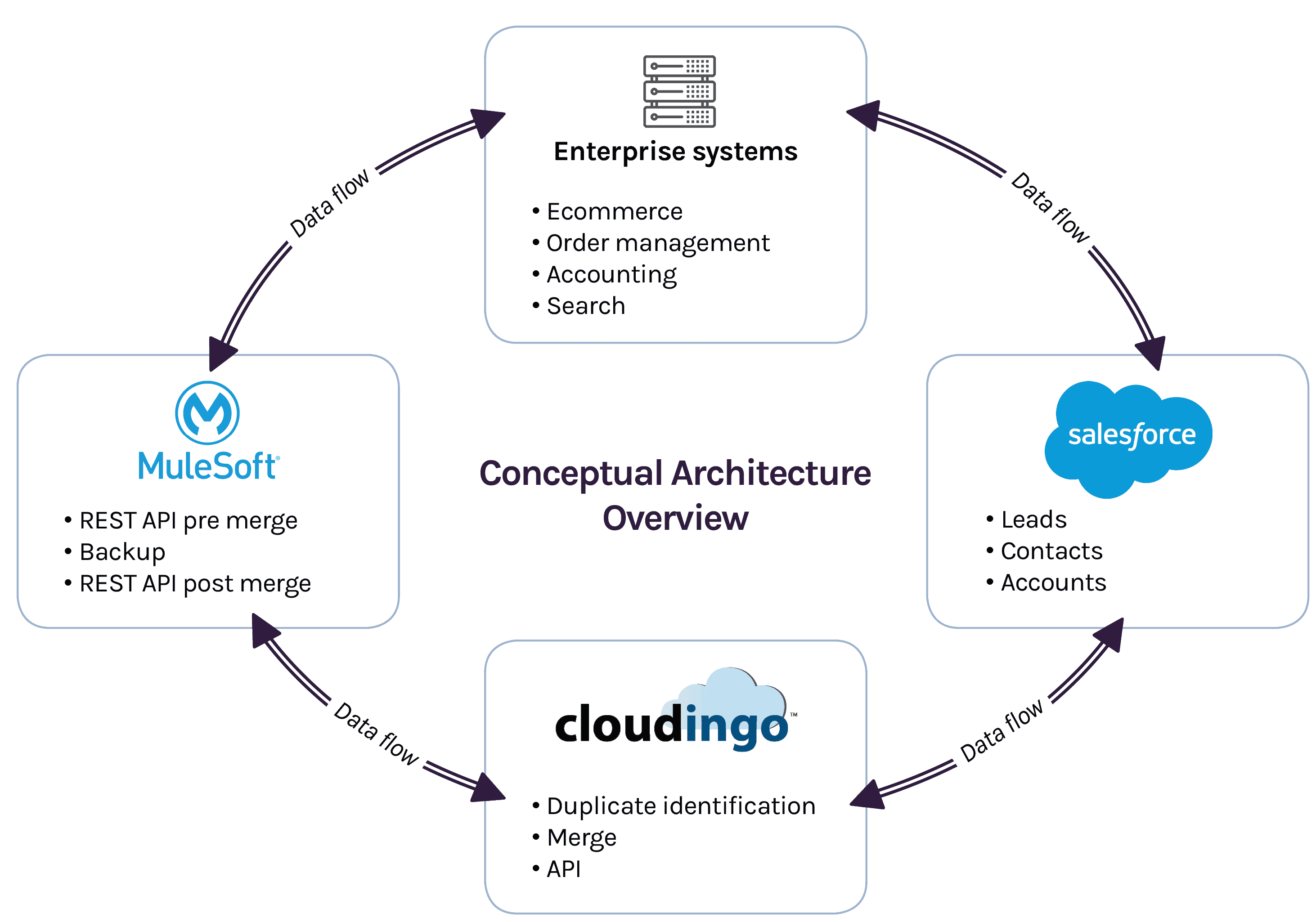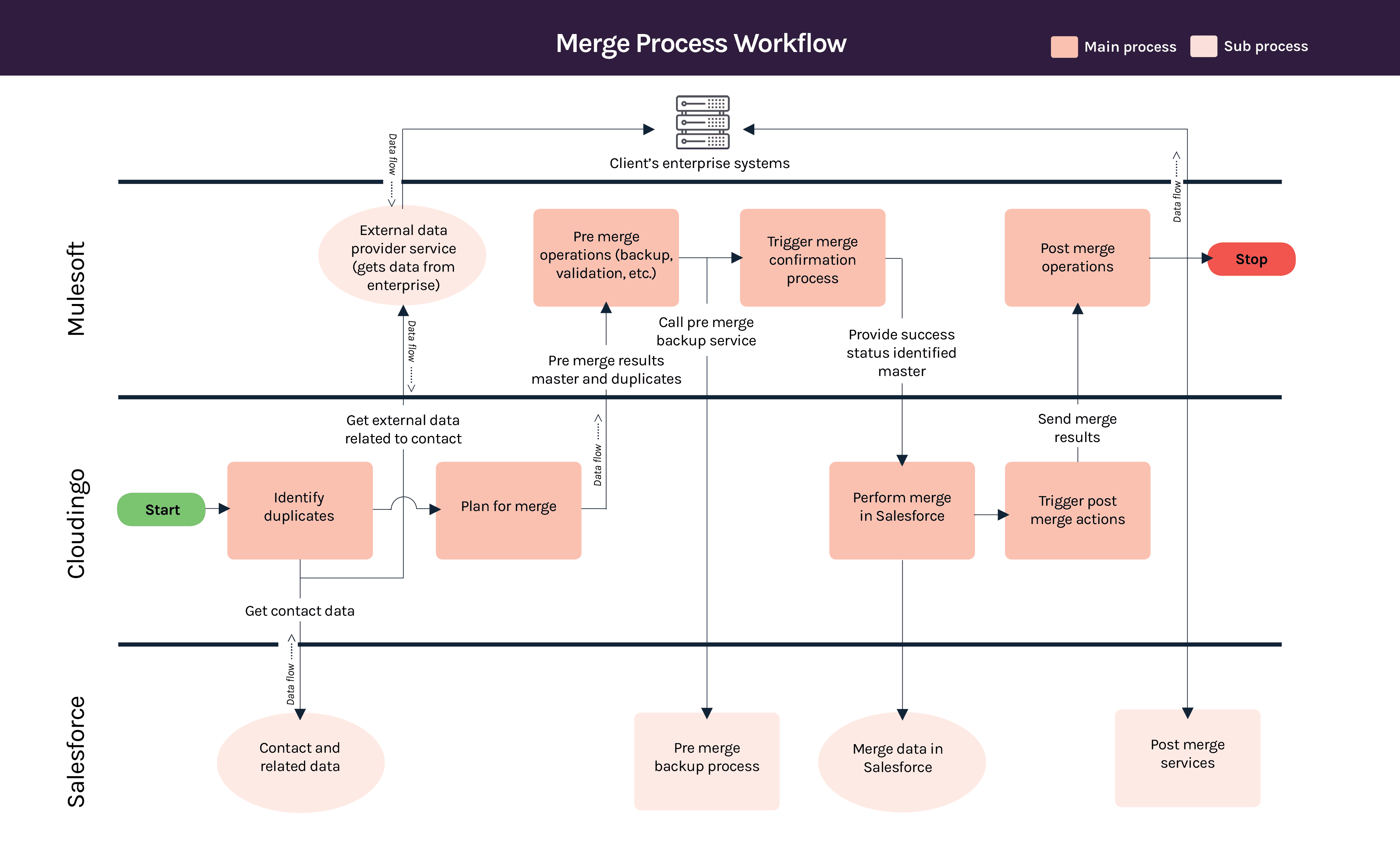Elevate the quality of your data and get a 360° customer view
Lessons from a big-name retailer on how data cleansing and integrations can increase your bottom line.
To stay competitive in today’s data-driven market, organizations need the best data possible. Raising data quality is challenging on its own, but even more so when data is dispersed across discrete systems while still being interdependent.
Everything from product, customer, and support data, to marketing and sales conversion rates can inform business decisions.
But with so many data sources, applications, and data warehouses available today, information becomes disparate and siloed. Making sense of the data becomes difficult and time consuming. And ensuring the quality and consistency of that data is almost impossible.
The technical landscape for one large retailer was riddled with dirty, duplicate data spread across numerous systems that lacked any synchronization.
This setup and data structure were impacting their bottom line. It was also interfering with their ability to provide the superior customer experience they needed to remain a market leader.
Learn how the company overcame these obstacles by cleaning their data to assure consistency and quality throughout their entire organization.
The Client
The company profiled in this story is a large US-based retailer of consumer products founded more than 30 years ago. It has over 2,500 brick-and-mortar stores, an ecommerce platform, and approximately 8,500 employees.
The company has a mature IT infrastructure consisting of CRM, accounting and billing, order management, and ecommerce systems among other platforms.
(Due to confidentiality, the company’s name is omitted.)
The Problem
Despite being one the largest players in their category, the company needed a digital transformation to remain the market leader. From a customer service standpoint, they were missing the mark.
For example, customers visiting the company’s website to check past orders and warranties weren’t able to find their needed information. The same discrepancy would occur when a customer called the service department. The support representative might find multiple records for the customer, making it difficult to view past calls and log cases.
Overall, the self-service process for customers was difficult and their call center was losing time and money navigating through duplicated or incomplete records.
Being able to access data is crucial to increase efficiencies and improve the customer experience. The company embarked on a transformation aimed at creating a 360-degree view of its customers.
However, there were two roadblocks that stood in the way.
Roadblock 1: Poor data quality
The company knew many of their problems stemmed from significantly poor data quality, mainly duplicate records that polluted their large dataset. As a B2C corporation, operationally new records were hastily created from multiple sources, both internal and external, magnifying the duplicate problem and making it an ongoing issue.
The company’s low data quality was negatively impacting operations, resulting in inefficiency, poor customer service and account management, and lost sales (in other words missed opportunities for revenue).
Roadblock 2: Disparate datasets
Further complicating the issue, is that the company’s CRM platform, Salesforce Sales Cloud, where poor data quality was most noticeable, was just one of many systems in place. There were other disparate datasets that did not communicate with one another. Each system contained specific information about a customer. Marketing history lived in one system, purchase orders lived in another, and warranty information lived elsewhere.
Every system had its own unique version of the “golden record,” specific to its uses and needs.
This posed a problem as managing records in one system without taking into consideration their relationship to records in other systems would fail to meet the company’s goal of the 360-degree view they were seeking. Likewise modifying records in one system without acknowledging related data in other systems ran the risk of negatively impacting operational continuity.
The Solution
The company relied on Salesforce Sales Cloud as their work horse for managing customer data. It’s the main place where they view their customer profile. But cleaning that data required a customized approach due to the complexity of the company’s system architecture and data relationships.
Correcting the problem was not simply a matter of deduplicating data in Salesforce Sales Cloud. Because of the interrelationship of all their systems and the data they share, decisions about cleaning data in one system are dependent on another. And once records are cleaned, there is a trickle-down effect to other systems.
The answer was two-fold: Cloudingo’s data quality and deduplication platform combined with Mulesoft’s Anypoint Platform to integrate their siloed systems.
In essence, Cloudingo acts as the project manager for data cleanup tasks. Cloudingo identifies duplicates in Sales Cloud and requests permission to merge those duplicates from the underlying systems via Mulesoft. Mulesoft then backs up the data and alerts Cloudingo that it is clear to merge the records. Once the merge is successful, Cloudingo calls back to Mulesoft, which then updates the disparate enterprise systems.

How it works
Although technically advanced, the workflow is simple and straightforward.
Mulesoft’s Anypoint Platform enterprise service bus (ESB) architecture enables the integration of applications who communicate with each other via the bus in a consistent and manageable way, while those systems remain decoupled and independent from one another.
Cloudingo finds duplicate records in the Salesforce Sales Cloud’s data objects using user-defined field value matches and various proprietary matching algorithms. Communication with Sales Cloud is through a Cloudingo managed package developed for use with Salesforce. Once identified, the merge process can be initiated either by Cloudingo or by Mulesoft via the Cloudingo API.
Upon receiving registration of a duplicate set and prospective merge, Cloudingo processes this information to create a merge plan, identifying a master record and any field value updates to be executed as part of the merge process. Cloudingo then calls Mulesoft again with an API hook to present its merge plan triggering Mulesoft to initiate a backup service of the data prior to the merge.
Once the backup has been confirmed, Cloudingo is cleared to merge the records in Salesforce Sales Cloud. And upon confirmation of a successful merge, Cloudingo triggers post-merge actions by sending the merge results back through Mulesoft, who communicates the changes via a REST API call to any external enterprise systems, thus closing the loop.

The Results
The workflow developed with Cloudingo and Mulesoft ensures a seamless and unbroken connection between the discrete customer data points held in different systems within the client’s technology stack. Records are merged in Salesforce Sales Cloud, customer portal membership is preserved in Salesforce Service Cloud where warranty information is held, email preferences are maintained to fulfill data privacy regulations in Salesforce Marketing Cloud, and data integrity is sustained across systems in the stack. This workflow is automated and ongoing, ensuring data quality does not degrade over time.
Most importantly, the collaboration with Cloudingo and MuleSoft gives the company the 360-degree view of their customer base they were aiming for.
With a unified approach to managing data across systems, sales and marketing campaigns are aligned with customer service and support initiatives. Management has the data they need to make business decisions and pinpoint areas of growth.
The company can now deliver a seamless experience across sales reps, phone, web, and trust that the data they’re working with is clean and reliable.



